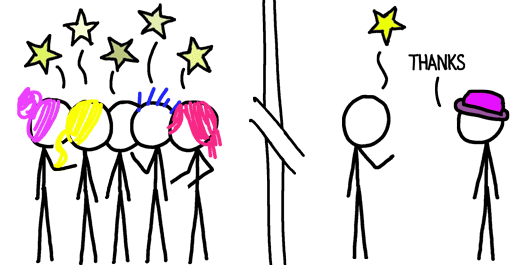Many of your consulting firm’s clients are prioritizing diversity in terms of thinking style, work style, age, cultural background and, of course, race and gender. What about you and your consulting firm—should you increase your diversity too?
The question is more nuanced than you’d think.
Quick note: this article is not about DEI (Diversity, Equity & Inclusion). “Diversity” has become shorthand in modern business parlance for race and gender. Let’s call that “capital D Diversity.” This article is about “lower-case d diversity,” which encompasses a much, much broader range of personal attributes. Perhaps a better term would be “heterogeneity,” but who wants to read an article about that?!
There’s a good argument to be made for assembling a homogeneous team in the early stages of your consulting firm’s growth.
In a small consulting firm, it’s helpful if you and your colleagues think and communicate similarly. You need a team that works well together, “clicks” and trusts each other, and that goal is easier to achieve when everyone feels like they’re cut from the same cloth.
Differences—whether real or perceived, cause conflict.
When you don’t share a background, approach, style and point of view, disagreements are more common and trust is—at the outset—lower.
However, the benefits of a team of dissimilar individuals outweigh the disadvantages, particularly if your consulting firm is dedicated to being Right-Side Up; i.e., client-focused.
Your consulting firm is hired to see what your clients don’t see. Perhaps what they can’t see. To think differently. To bring novel insights and breakthrough applications of proven approaches.
Homogeneous teams are easier on your ideas because an idea that makes sense (“feels right”) to you is likely to make sense to someone who’s much like you.
Yet, clients pay a premium for superior thinking; for ideas and approaches that have emerged from the crucible of critical analysis, and have survived the slings and arrows of skeptics standing at all points of the compass.
Which is why you should push your consulting firm past the discomforts and drawbacks of diversity and embrace a wide range of differences into your consulting teams, project teams and staff.
At your consulting firm, strive to tap into a broad mix in upbringing, thinking style, communication preferences, capabilities, outlook, culture, education and personality, among other traits.
If your consulting firm employs staff, you can search for varied personality styles by using assessments such as Enneagram, DISC and Kolbe. You can also stretch past your comfort zone in terms of geography, language, background and a multitude of other personal attributes.
If your consulting firm is smaller, create a mastermind or join a consulting firm development program with a kaleidoscope of people.
Yes, collaborating with people who are wildly unlike you causes speedbumps and slowdowns in your consulting firm’s work.
However, your consulting firm will generate better outcomes for your clients and, ultimately, become stronger, richer, more vibrant and more profitable when your practice is comprised of a patchwork quilt of contributors.
What other tips do you have for creating (and making the most of) human variety in your consulting firm?
Text and images are © 2024 David A. Fields, all rights reserved.

 David A. Fields Consulting Group
David A. Fields Consulting Group 




David, this is an excellent and thought-provoking article. When you talk with people who agree with you, you essentially talk in an echo chamber. But when you debate ideas with people who disagree with you, you find holes in your thinking and can improve.
We partner with subject-matter experts who often hold strong opinions when going into a client. Some of our best ideas emerged from debates with these people when we defended our thinking. Some of the points they made have changed how we do things and helped us grow. And, of course, there is nothing like working with clients to inspire new ideas and improvements. As CEO of a boutique consulting firm, my job is to curate these good ideas and use them.
Well said, Chris! “Curating good ideas” is an excellent way to think about this. And willingness to debate, which is different from fighting tooth and nail to prove your own idea’s supremacy, serves a consulting firm well.
Thank you for your outstanding example and contribution this morning, Chris.
This is a great read! My firm does not fit the average business strategy firm bubble. And what I have also noticed is with that we have a tendency to bring in other firms for subcontracts that also are unique to the business bubble. Many of our latest contracts have to do with business outreach and research revolving around how to bridge the gap between large corporations and resource agencies and small minority women and veteran firms.
When you or your consulting firm doesn’t conform with the historical stereotype of business leaders, you can either view it as a hindrance or a benefit. (It’s probably both.) You’re clearly showing the benefit and demonstrating that diversity and Diversity are both powerful. Well done, Dr. Shay!
Hi David,
A good piece (as usual!). A few possible additions, based on experience and research I did when writing the manuscript for my book on The Value of Values:
1. Experiments show that varied perspectives / thinking styles / backgrounds create better outcomes for the reasons you mention – and especially through avoiding groupthink (here is a crossover with “capital D” diversity)
2. However, people often have to learn to appreciate this value because it creates friction, sometimes making things go slower or frustrating people. It *feels* as though varied perspectives are making the process worse
3. But this is false! As you mention, and experiments show, the end result is better
4. This means people often need to *learn* (and constantly remind themselves) what a genuinely better process feels like
5. Also, a friend of mine who was a famous innovation consultant emphasized for this to work, there has to be a high level of respect for the people who think differently. He had a 2×2 matrix (of course!) with difference on one axis and respect on the other.
• High difference and low respect = fight!
• High difference and high respect = combining the best of everyone’s thinking (or, if you’re into buzzwords, which I’m not, “synergy”)
Great additions, Daniel, and thank you for the research-based validation of the points in this article. (We see both sides all the time in small firms–the benefits of homogeneity and the struggles/benefits or diversity.)
Your points on how to make the most of varied perspectives are well-taken, and I appreciate you sharing them with me and other readers, Daniel!
Thank you for the “Groupthink” word here! It is anathema to team (and product or service) development. Executive leadership teams (and really any kind of team) need friction to get the best ideas out of the collective minds of the team. But people don’t necessarily know this. Helping them understand that there is a fundamental difference between “good conflict” and “bad conflict” is necessary to move the team forward. Once the team understands this and can define both terms for themselves, they can improve their ability to have “good conflict” inside the vetting process of any issue. Going slower can uncover the problems inherent in any solution but you need to balance time with what’s good enough (for now).
I agree that the matrix is relevant also. Sometimes people mix up respect and trust. One needs to perceive if the trust quotient is high enough and readily in evidence in the relationships of the team. Trust is of higher value than respect and yet adds to the bottom line of each. Once we have mutual trust, we can vet things like banshees, which necessarily increases the number of “best options” and respect for opposing sides of an issue, leads to best solutions, and lends itself to respecting the differing facets between people. Trust and respect also have to be earned and cannot be demanded. At the end of the day, I can trust someone more who will come back and fight tooth and nail with me another day to uncover the goodness of a best solution or something that may lie in the middle of multiple options. We are seeing a lot of articles right now on psychological safety – and with good reason. Psychological safety has been lacking in most hierarchical or matrixed organizations. It means that I can bring up a problem in logic or any other part of a perceived solution, and I won’t get thrown under the bus for it, won’t get a promotion taken away from me, won’t get talked about behind my back – any number of company politics/turf war/silo problems. I can be wrong and I won’t have people embarrassing, marginalizing, or punishing me for speaking up even if I was wrong. This affects the team’s ability for individuals to contribute, feel included, safe to learn and make mistakes, or safe to challenge the status quo or bring up problems – all without consequences to status, position, or power. When we can be safe with each other, we can start to add additional trust into our relationships. Learning how to honor and trust our teammates allows for greater respect to blossom for each individual. This leads to more agile and co-creative thinking which are some of the top skills for teams.
I want to read your book when it comes out, Daniel! It ought to be very good reading!!
Excellent article, David! I recently attended a webinar hosted by the Neuroleadership Institute in which the central idea was that diverse teams are “smarter” teams. This is because in diverse team interactions we have to process differently: when a variety of backgrounds, frames of reference, perspectives, etc., is represented we are forced to slow down . . . as compared with being able to make assumptions (based on the idea that we all come from roughly the same frame of reference in a more homogeneous team). So homogeneous teams can be STRONG (in their relative unanimity) — and WRONG.
I appreciate the comments in this thread about needing to learn to operate differently if we want to reap the benefits of diversity. Our business culture puts such a premium on efficiency that we often look for the quickest way to get to a decision or solution rather than invest in the kind of dialogue that allows for multiple perspectives to be considered in the interest of informing decisions . . . which are then likely to be smarter and more sustainable.
“Strong and Wrong” is a telling phrase that’s distressingly applicable to a wide range of groups, Carole. It takes character and conscious effort to “weaken” yourself, your group or your firm in order to produce a better result.
Thank you for injecting a dose of science into the conversation and your outstanding perspective, Carole.
Short and great article, David. Thank you for your insights. Diversity (both big D & small d) is worth the time and effort.
I appreciate the comments also. I learn as much from them as your articles. Thank you
We have a lot of smart readers (like you) who transform articles and idea into powerful conversation. I’m incredibly grateful to you and rest of this community of readers, Ray!